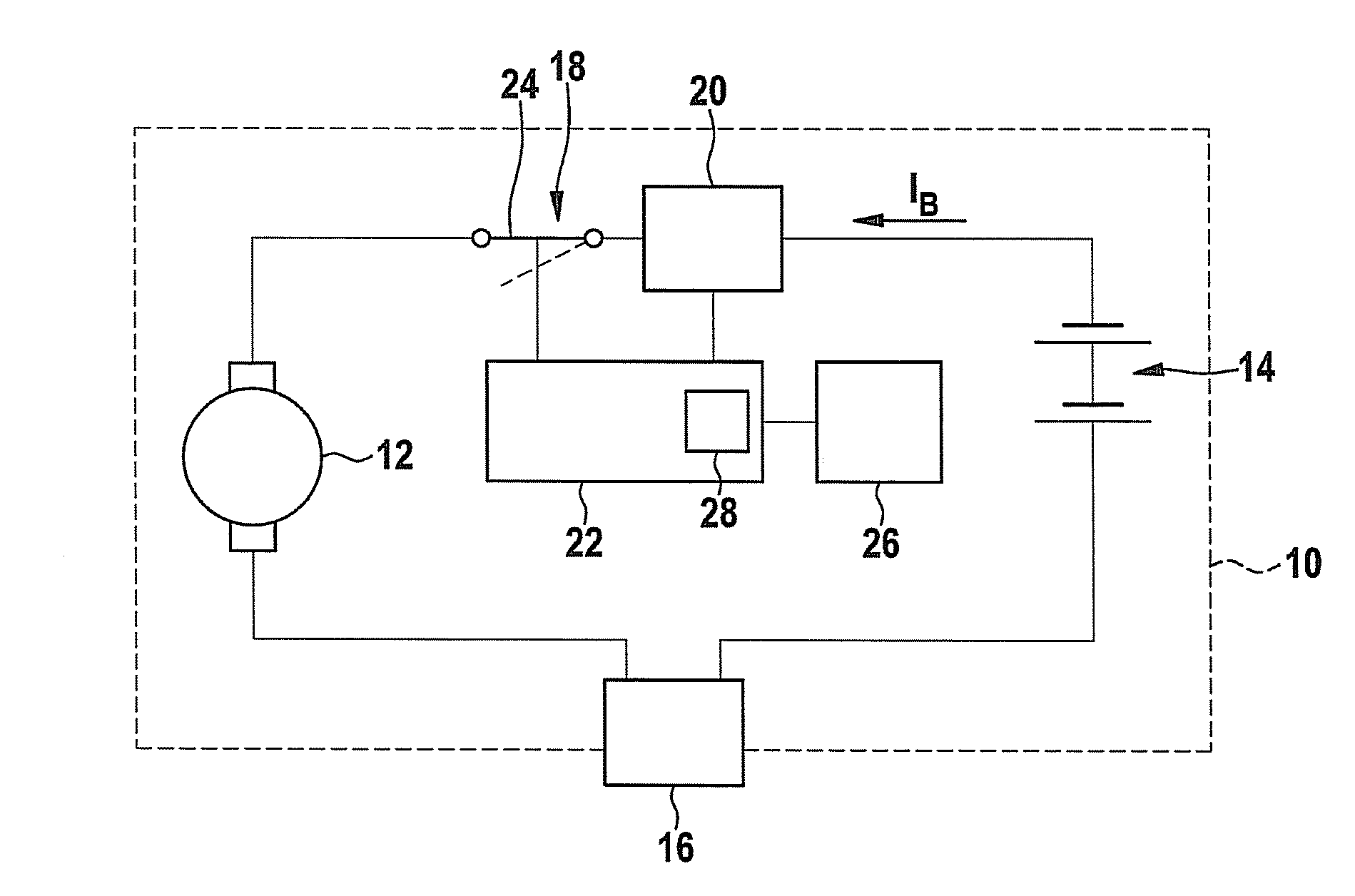Method and device for overload detection in battery-operated devices having an electric motor
a battery-operated device and overload detection technology, which is applied in emergency protective circuit arrangements, parameter calibration/setting, instruments, etc., can solve problems such as excessive heating of the cell to only be detected, excessive rough protection, and the need for limiting curren
- Summary
- Abstract
- Description
- Claims
- Application Information
AI Technical Summary
Benefits of technology
Problems solved by technology
Method used
Image
Examples
Embodiment Construction
[0024]FIG. 1 shows a hand-held power tool 10 an electric motor 12, hand-held power tool 10 being powered by a storage battery 14. Starting out from storage battery 14, an operating element 16, electric motor 12, an interruption device 18 and a current-measuring device 20 are situated in the electric circuit. Interruption device 18 is controlled by a monitoring apparatus 22. Interruption device 18 has a switch 24 (an implementation in the form of a semiconductor component is also possible), which is normally closed but may be opened, if necessary, by monitoring apparatus 22. The open position of switch 24 is indicated by a dashed line. Finally, storage battery 14 is assigned a temperature-measuring device 26 that measures the temperature of storage battery 14. At least one static, limiting temperature value is stored in monitoring apparatus 22 or in logic device 28; in this case, the static, limiting temperature value being permanently stored in hardware.
[0025]For use of the method a...
PUM
 Login to View More
Login to View More Abstract
Description
Claims
Application Information
 Login to View More
Login to View More - R&D
- Intellectual Property
- Life Sciences
- Materials
- Tech Scout
- Unparalleled Data Quality
- Higher Quality Content
- 60% Fewer Hallucinations
Browse by: Latest US Patents, China's latest patents, Technical Efficacy Thesaurus, Application Domain, Technology Topic, Popular Technical Reports.
© 2025 PatSnap. All rights reserved.Legal|Privacy policy|Modern Slavery Act Transparency Statement|Sitemap|About US| Contact US: help@patsnap.com



